Imagine a bike that can tackle all-day epic rides with ease and efficiency, cover ground extremely fast and has just the right mix of componentry to fly down descents, and you're on your way to picturing the best downcountry mountain bikes.
Here, we list the best downcountry mountain bikes in 2024, as tested and rated by our expert reviewers at BikeRadar.
A relative newcomer to the mountain bike scene, downcountry bikes are growing quickly in popularity because they give you everything you need and nothing you don't.
Many of these bikes started life as race-ready cross-country mountain bikes, but they have been given some extra travel and a more progressive geometry, while retaining their XC speed.
Not all downcountry bikes are built the same, though. While some are more like beefed-up cross-country mountain bikes, others are closer to the best trail mountain bikes – pared-back and adrenaline-seeking.
We've put together a buyer's guide at the end of this article to help you choose the best downcountry bike for you and to help explain this new category of bike.
Best downcountry mountain bikes of 2024
Transition Spur X01
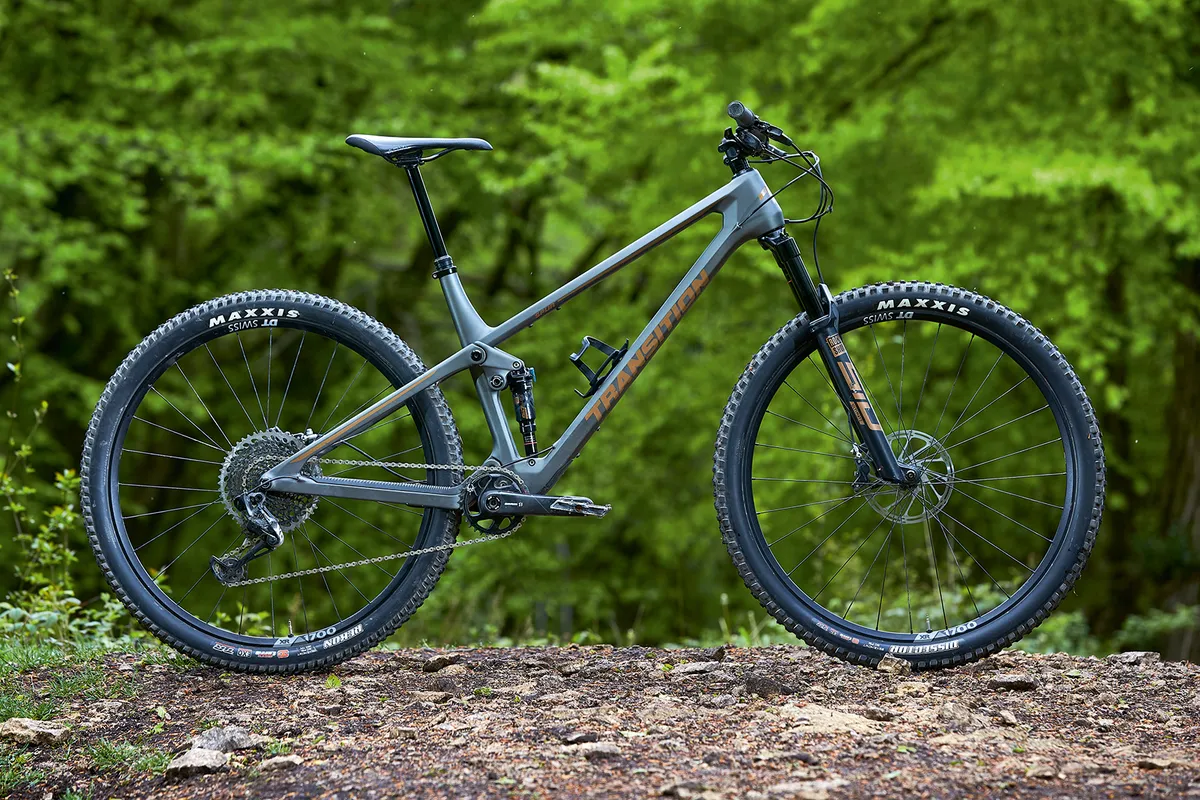
- Great geometry
- Smooth downhill, sprightly uphill
- £6,000 / $6,499 / AU$10,499 as tested
Unlike some downcountry bikes, the full-carbon frame Transition Spur is neither a beefed-up XC machine or a pared-back trail bike. Instead, Transition started from the ground up to build a bike that, it claims, will cover ground quickly and fly down descents.
The Spur has 120mm of travel in both the front fork and the rear shock, and when it comes to descending it really shines a light on how capable a bike like this can be, staying composed with an innate ability to smooth out the trail despite its modest travel.
When climbing, the Spur is quick and efficient, surging forward as you step on the pedals, and staying firmly rooted on rough pitches.
Overall, Transition has created a bike with superb geometry, well-considered kit and a ride that would put many longer-travel bikes to shame.
Cotic FlareMAX GX AXS
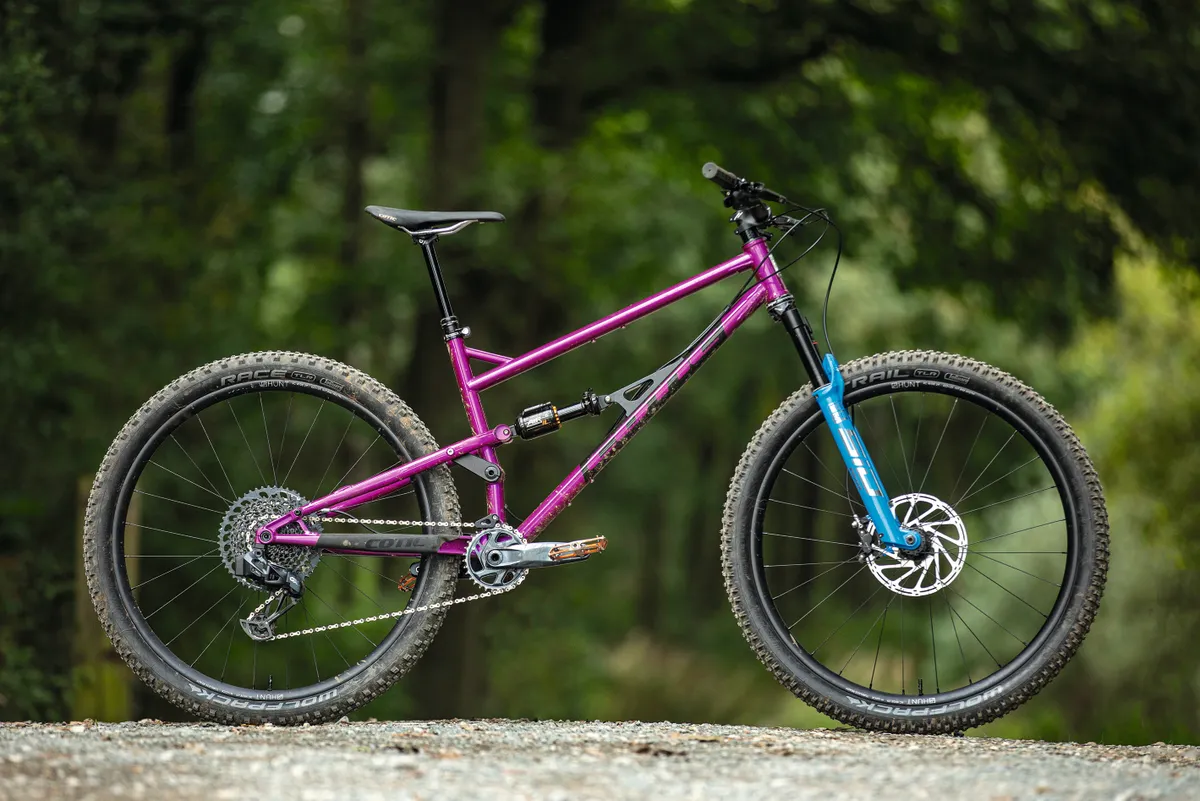
- Very capable downhill
- Fast rolling and responsive
- £4,899
Designed for riding in the UK, the FlareMAX feels capable in most situations, leaning more to the side of ‘down’ in the downcountry equation.
Uphill, the FlareMAX offers tons of traction, accelerating efficiently when you stamp on the pedals. Featuring 125mm of rear travel, the FlareMAX has a ground-hugging feel that never makes it seem under-biked when pointed downhill.
The bike comes well specced with a 120mm RockShox SID fork up front, while Cane Creek's DBair IL takes care of the rear. It also features SRAM’s Eagle AXS drivetrain and G2 RSC brakes, making the bike weigh in at 13.9kg for a size large.
Juliana Wilder CC X01 AXS TR Reserve
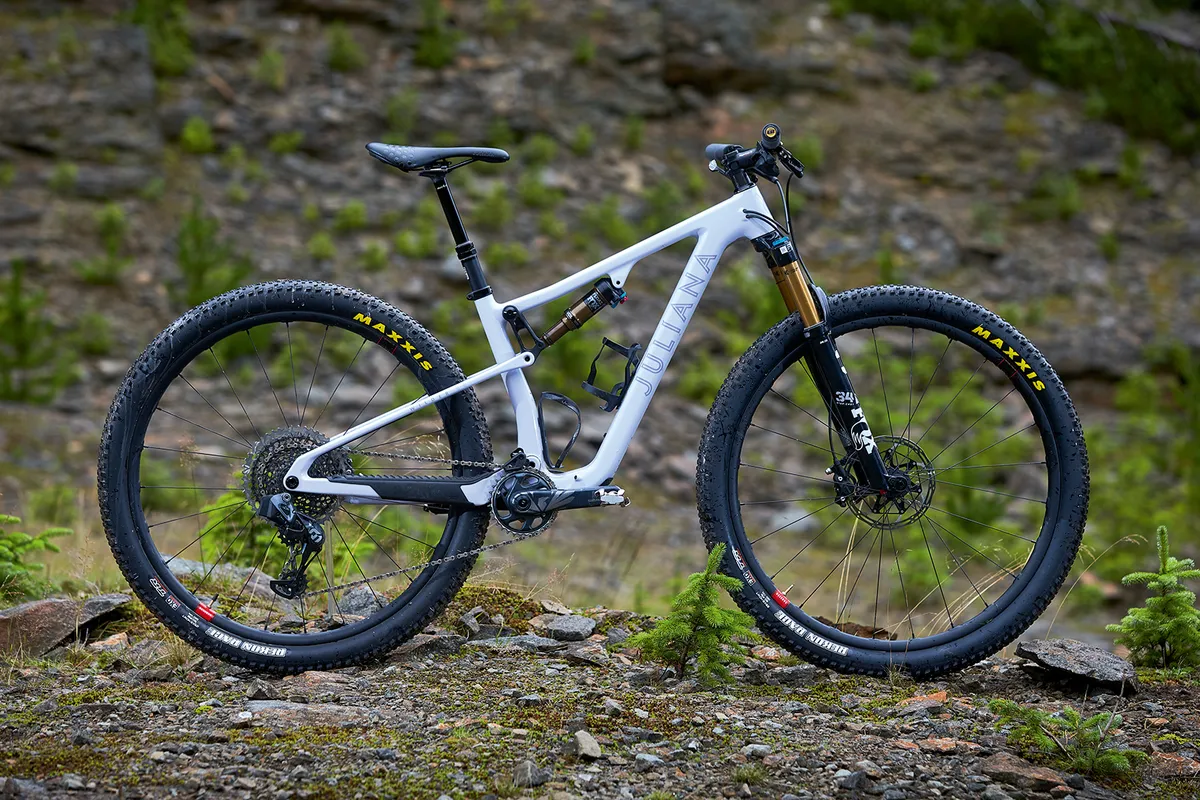
- Super-light, responsive build
- Impressively capable on the descents
- £8,299 / $9,449 as tested
Weighing in at 10.5kg, it’s no surprise that this range-topping new downcountry build from Juliana is a mega climber.
By dropping the VPP linkage, the rear-suspension design has helped to shave 289g off the frame weight of the Blur – the Wilder’s Santa Cruz equivalent – yielding 115mm travel using the single-pivot linkage and flex-stays.
There’s more to this new downcountry rig than pure prowess uphill though: specced with 120mm travel up-front, the Wilder is surprisingly capable when it comes to tackling rougher ground and descents.
Specialized Epic EVO Expert

- Super-fast when you step on the pedals
- Short-travel but incredibly capable
- £6,750 / $6,300 / AU$10,100 / €6,699 as tested
The Specialized Epic EVO is a rocketship, reflective of its cross-country roots.
On climbs, the bike is sprightly and energetic and gives the feeling that everything you put into the pedals is translated into forward momentum. Slow up a little bit and the bike sits in the middle of its travel and feels more supportive than others.
When you point the Epic EVO downhill, it's surprisingly stable, delivering far beyond its 120mm of travel on rougher terrain, but getting the right line is important to really unlock the bike's potential.
For the price, one might expect a carbon bar rather than the alloy one Specialized has specced, and the brand's in-house tyres could be switched out for some extra bite.
Trek Top Fuel 8
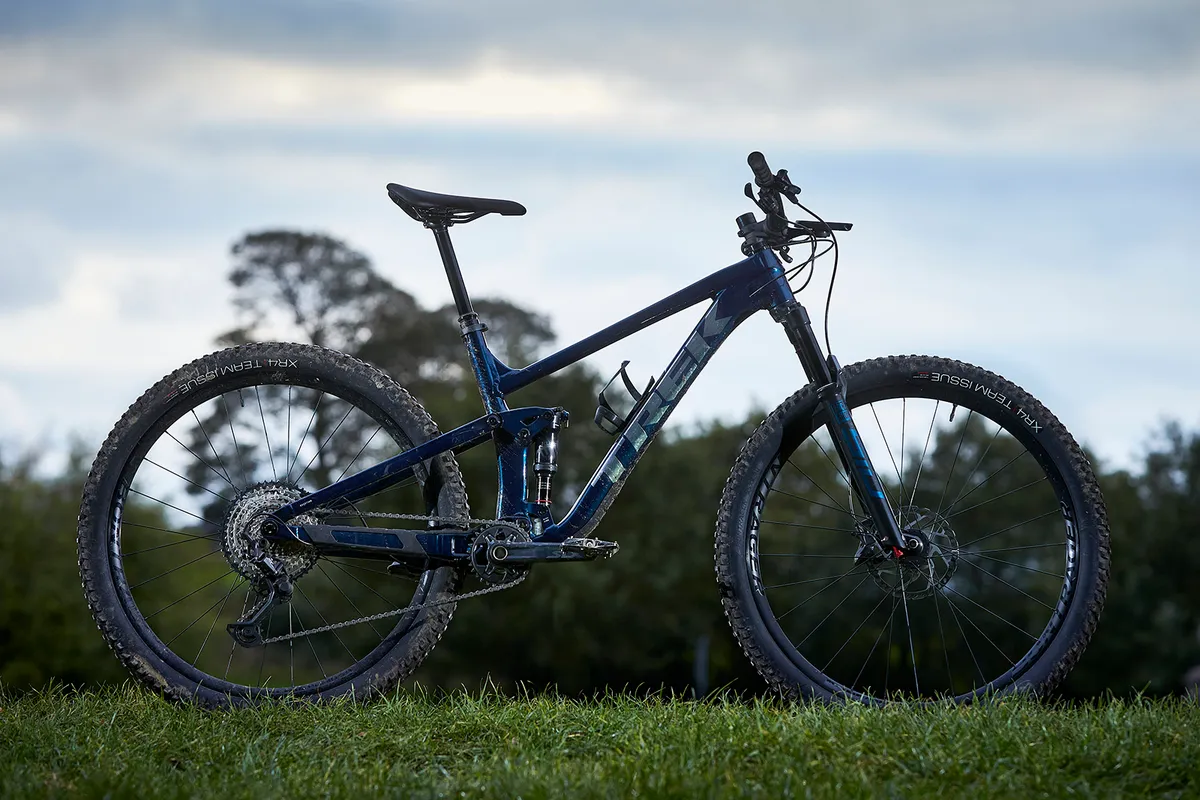
- Ideal suspension and geometry
- Meaty but weighty frame
- £3,850 / $3,830 / €4,099 / AU$5,300 as tested
The Trek Top Fuel 8 won't quite match its rivals on descents, but it's highly versatile, climbing and nullifying rugged surfaces with aplomb.
The modern geometry and gearing of the Shimano XT/SLX groupset allow you to scamper up sheer inclines, provided the Bontrager XR4 tyres retain purchase.
Downhill, the Top Fuel is agile and the RockShox SID fork is only outgunned on the most technical sections.
Unlike an XC bike, the Top Fuel should be forgiving enough to pootle along on all-day adventures.
YT Izzo Uncaged 7
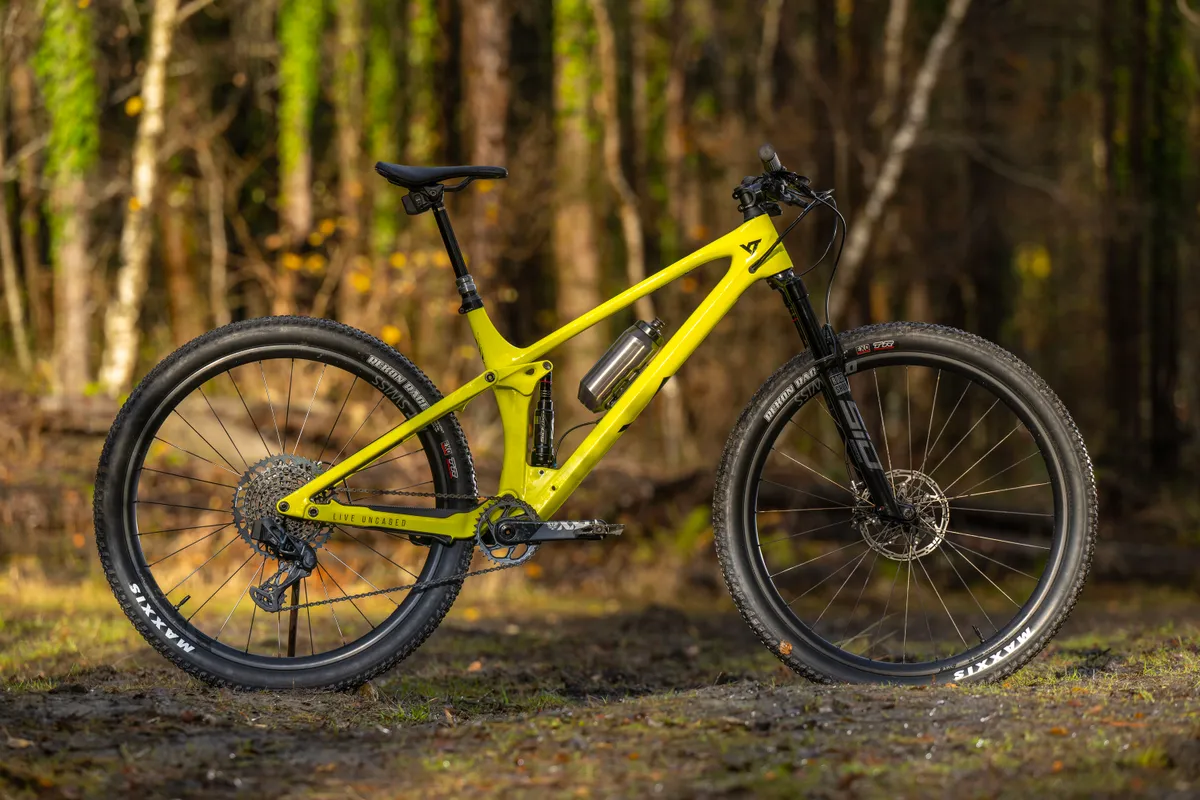
- Modern geometry
- Impressive climbing ability
- Good spec for the money
- £6,299 / $6,499 / €6,299 as tested
The Izzo Uncaged 7 features the same frame as the rest of YTs Izzo range, but features 120mm of travel front and rear instead of the usual 130mm.
Being direct to customer, YT has provided a high spec for the money featuring SRAM's XX1 AXS groupset and G2 Ultimate brakes. A full carbon frame and the carbon DT Swiss XCR 1200 wheels make covering ground quick and easy.
Descending is at the core of the Izzo, though meatier tyres would allow it smash gnarlier trails.
Nukeproof Reactor Carbon 290 ST

- Downhill demon
- Great spec for the price
- £4,700 / $4,700 / AU$6,600 as tested
The Nukeproof Reactor ST is a really capable bike that comes with progressive geometry and a good riding position.
Considering the price point of the Reactor ST, the kit that is bolted to it is really impressive. There is a Fox Factory 34 fork, a Shimano XT 12-speed groupset, Maxxis rubber and carbon handlebar.
On descents, the Fox 34 feels well-controlled and the 125mm of travel in the rear can take some pretty big hits, creating a ride that is seriously fun.
The Reactor ST isn't energetic on climbs and locking the shock is advised to get a bit more efficiency on long drags. This means the Reactor ST isn't quite as rounded as other downcountry bikes, but when it comes to descending and value for money, it's hard to beat.
Scott Spark 900 Tuned AXS
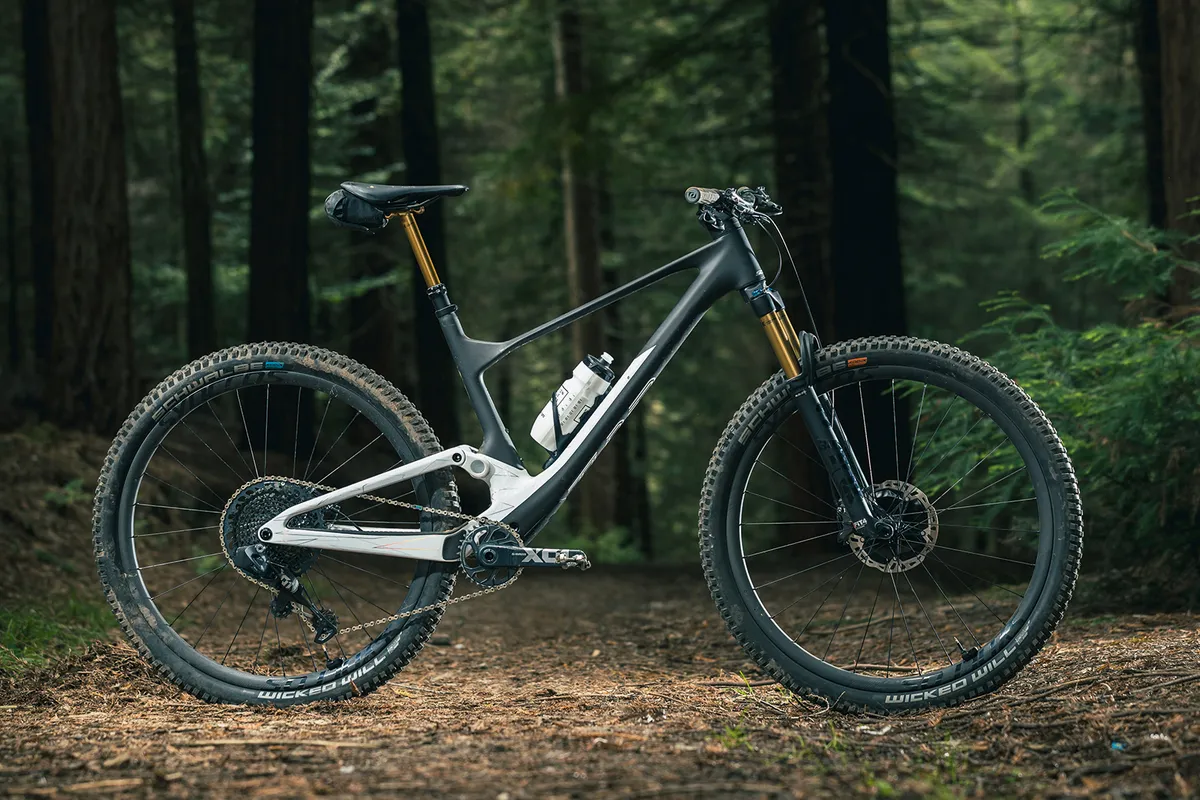
- Lightning fast
- Suspension eases over bumps
- £8,199 as tested (international pricing TBC)
Even in its downcountry guise, with a 130mm-travel fork, the Scott Spark 900 Tuned AXS is suitably rapid. This is in part due to the Fox Nude 5T shock and fast-rolling Schwalbe Wicked Will tyres.
Thankfully, the Shimano XTR brakes can cool off that speed.
Although the Scott Spark whizzes up rock-strewn ascents, on leveller ground the suspension tends to absorb power from the pedals instead of propelling the bike forwards.
Scott Spark 910

- Very fast, devours climbs
- Clean hardware
- £5,299
Sharing its frame with the Spark RC cross-country race-bike, the Spark 910 is a fast mile-munching monster with top-of-the-class climbing ability.
The Fox Nude rear shock provides 120mm of travel and is hidden away in the seat tube, creating a clean-looking frame and protecting the shock from the elements. A 130mm Fox 34 fork supports the front end, and the bike is specced with Shimano's XT drivetrain and features a Syncros Fraser integrated bar and stem.
Unlike some downcountry bikes, the Spark is still very much 'country' focused, and is more at home at trail centres rather than gnarly backcountry descents.
Also consider…
This downcountry mountain bike scored fewer than four out of five stars in testing, but is still worth considering.
Cannondale Scalpel SE LTD Lefty
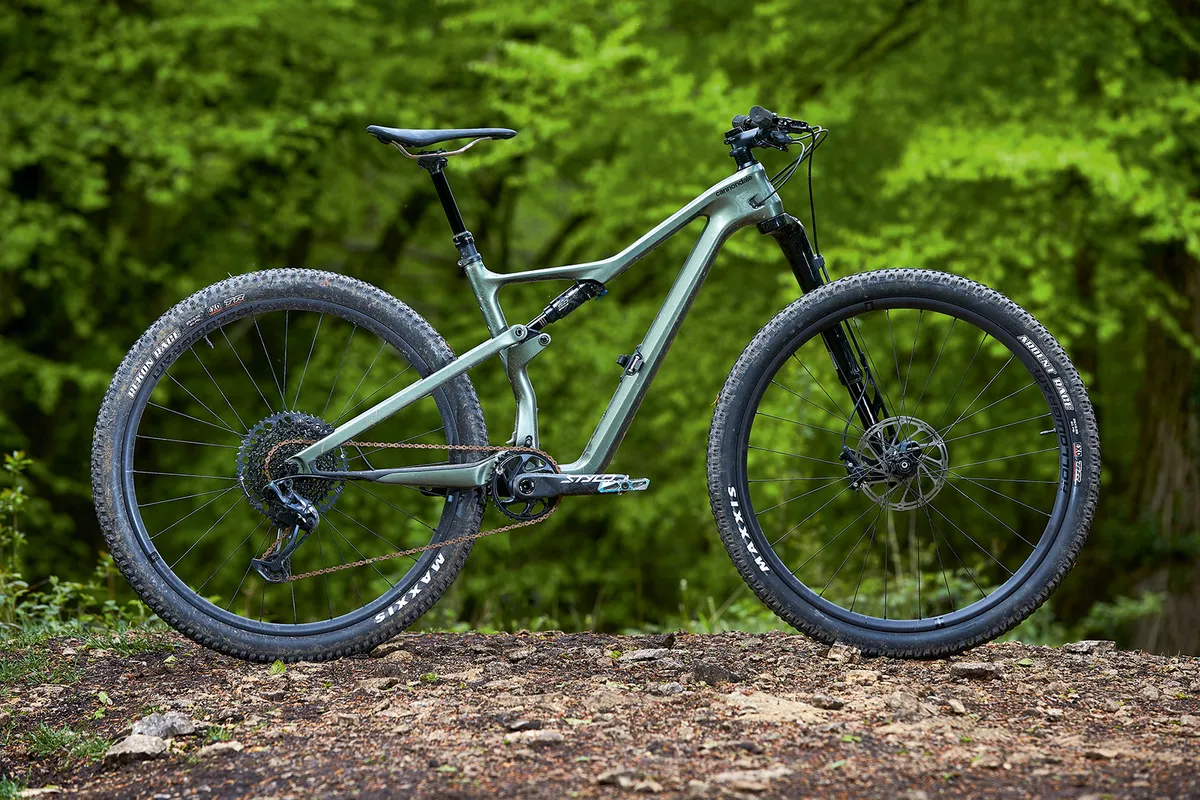
- Incredibly comfortable
- Agile and fun
- £7,000 / $8,300 / €8,399 as tested
The Scalpel SE LTD Lefty shares the same carbon frame as Cannondale's XC Scalpel but has a longer stroke shock to increase the travel from 100mm to 120mm.
This cross-country DNA is apparent in the handling, with the Scalpel eager to get moving and climb. The bike doesn't feel quite as supportive or as bob-free as other downcountry bikes, but on long straight climbs, it can go along at a good pace.
The Scalpel really shines on meandering downhills. It slithers over roots and rocks with ease and is nimble on flowing trail park descents. But rougher terrain will reveal the limits of the Scalpel quicker than other similar bikes.
Having said this, if you're looking for a downcountry bike more at the XC end of the spectrum, the Scalpel is ready to eat up some big miles and comfortably cut through singletrack too.
First ride recommendations
These downcountry bikes have only been ridden by the BikeRadar testers a handful of times, so they haven't yet been given a full, rated review, but they are worth considering.
Yeti SB115 T1
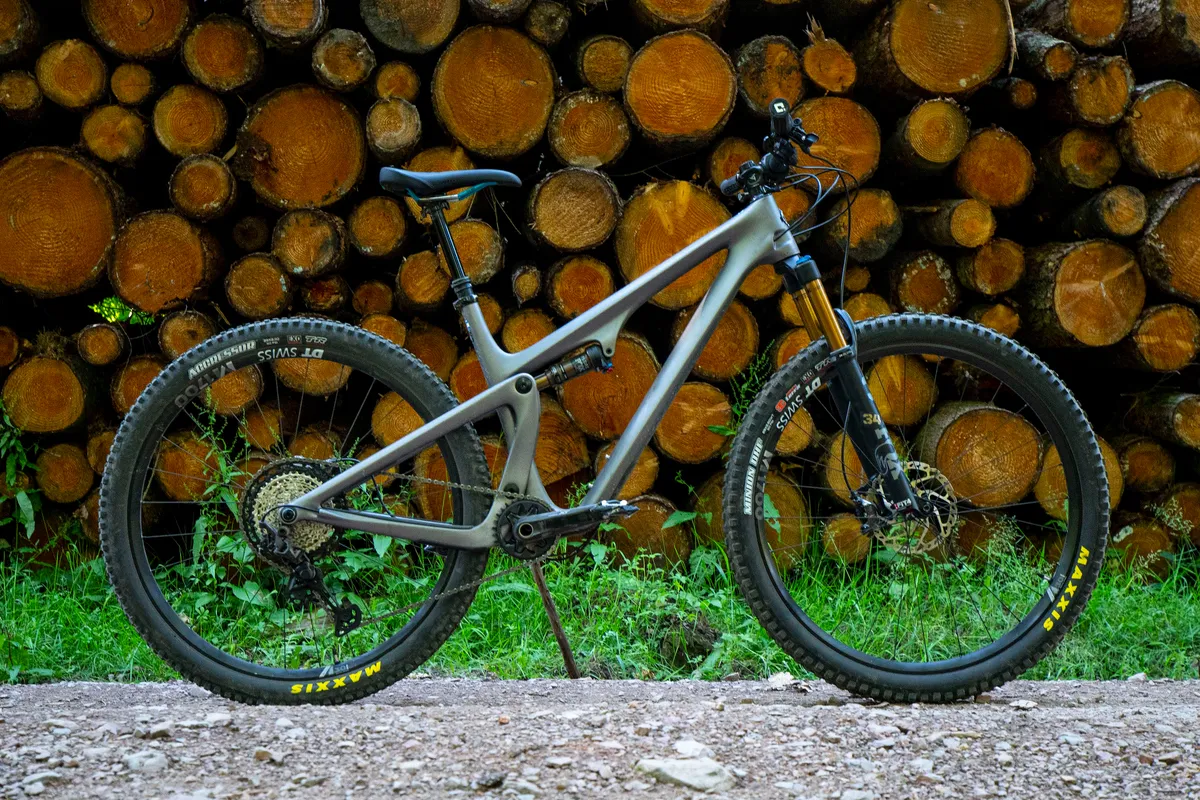
- Supple and supportive suspension
- Super-solid chassis
- £6,499 / $6,300 / €7,490 as tested
Adapted from Yeti's SB100 cross-country bike, the SB115 T1 is a solid bike that feels very planted through the chunder but efficient on the climbs.
The SB115 is graced with Fox Factory suspension that comes up trumps. High anti-squat figures keep the bike feeling stable on climbs.
On descents, it is soft enough to keep the rear wheel stuck to the ground and with enough mid-stroke support for some good pop. It also ramps up nicely for bigger hits, even though there is just 115mm of travel in the rear.
The geometry of the Yeti is fairly similar to the SB100, which contributes to its speed, but the reach is short and it could do with a bit more length to remain stable and less skittish on loose rocks and steep chutes.
Buyer’s guide to downcountry mountain bikes
Mountain biking often feels like a broad umbrella for many different disciplines; from trail to high-flying downhill, there are myriad riding styles and, of course, the bikes to match.
Downcountry bikes are one of the latest mountain biking phenomena, sitting at the intersection of cross-country, trail and all-mountain bikes.
Having existed in one form or another for a number of years, downcountry bikes have recently hit the mainstream. As demand for this type of bike began to balloon, the bike industry responded, and downcountry is now a burgeoning category.
Different brands approach downcountry bikes in slightly different ways, but this buyer’s guide will take you through everything you need to know.
What is a downcountry mountain bike?

In short, downcountry bikes are lightweight XC-style frames with added travel, trail-friendly geometry and wider, knobbly tyres.
The result? Bikes that will cover ground extremely fast but still enable you to charge down descents.
The term 'downcountry' was coined by Mike Levy at PinkBike three years ago, and is a mash-up of 'downhill' and 'cross-country'. So, a pretty neat encapsulation of what the bikes are for, and consequently a term that has stuck around.
The origin of downcountry bikes is a bit hazy. Some say it extends back to cross-country racing, where gnarlier courses demanded more technical, gravity-capable machines. Others say it comes from engineers making small tweaks to thoroughbred XC race bikes to make them more fun to ride.
Arguably, they could stem from manufacturers doing their market research and seeing consumers riding more extreme terrain on their cross-country bikes and making corresponding upgrades to existing bikes.
However they came to be, some of the biggest bikes brands now offer off-the-shelf downcountry bikes that deliver a refined balance of short travel, minimal mass and progressive geometry.
What to look for in a downcountry mountain bike
Alongside trail-friendly geometry, wide knobbly tyres and extended travel, downcountry bikes have a few other features that help them balance their fast and agile ride with their downhill performance and more relaxed feel.
Much of what makes a downcountry bike is what it is specced with, and here we run through the key things to look out for.
A lightweight frame with a relaxed geometry
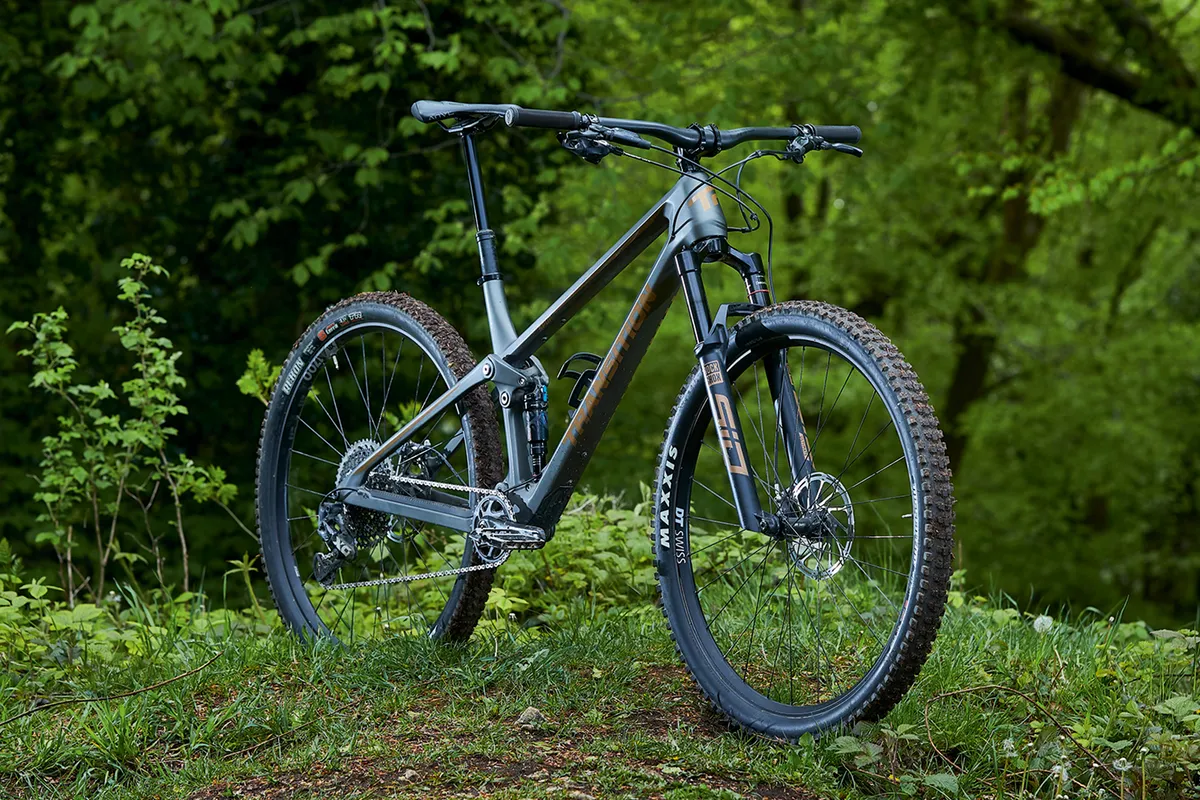
Go back 10 years and tell a cross-country rider they’d one day be riding a bike with a 66-degree head tube angle and they’d probably look at you as if you’d had one too many caffeine gels. But now, this is exactly what is happening with downcountry bikes.
This angle is slacker than traditional cross-country bikes and helps give downcountry bikes their gravity-riding potential. This is because a slacker angle means the front fork sticks our further, creating a more stable ride at high speeds.
Reach figures have also increased as head angles have decreased. A longer reach number makes the bike feel more stable when you’re stood on the pedals descending.
Descending stability was going to be an inevitable outcome when combining the slack head angle, long reach and the consequential longer wheelbases created by those two figures.
Even though downcountry bikes have more gravity-friendly geometry, they remain relatively light so riders aren’t pushing too much mass, helping the bikes stay fast.
Short-travel

Although downcountry bikes have a short-travel design, they still offer a bit more travel than cross-country race machines to help them on more technical downhill sections.
As a general rule, downcountry bikes have between 120mm and 130mm travel in the forks and a variation of between 110mm and 125mm at the back, depending on brand and model.
Some downcountry bikes do offer more travel, but this is testament to how downcountry is a rather woolly category that is more about different factors coming together than travel defining what the bike is.
Large wheels and burly tyres
29in wheels are standard on downcountry bikes. Compared to 27.5in wheels, they require less effort to keep their momentum and are consequently more efficient, making them the right choice for the sorts of longer, more pedalling-intensive rides you’ll be doing on these bikes.
Downcountry bikes pair 29in wheels with wider and burlier tyres than you would expect to find on 29er cross-country bikes.
These mountain bike tyres sit between fast-rolling, lightweight XC tyres and chunkier downhill treads, making them fast and less of a drag when climbing, yet more durable and capable on the rough stuff.
Wide bars and short stems

Wide bars and short stems are the go-to for downcountry bikes.
The wide bars give you more leverage and help make downcountry bikes super-stable, agile and less skittish than bikes with more XC-focused components.
A shorter stem also improves handling. It gives the bike quicker handling characteristics by making steering more direct and makes the bike feel more responsive.
Dropper seatposts
Dropper posts are a common feature on downcountry bikes because they give riders a bit more space for moving around and shifting weight on technical descents.
It’s possible to raise the saddle for efficient pedalling and to make the most of downcountry bikes’ cross-country-style speed, combining the best of both worlds.
It might not be a surprise that downcountry bikes come with dropper posts considering their versatility, and dropper posts are even making their way onto gravel bikes.
Gearing
Gearing on downcountry bikes is slanted towards the cross-country end of the spectrum. Front rings tend to have between 32 and 38 teeth compared to the 30- to 34-tooth rings on trail bikes.
This allows for more speed, which is always appreciated on the smoother trails and fire roads that a downcountry bike is at home bombing along, and for long days in the saddle.
Brakes
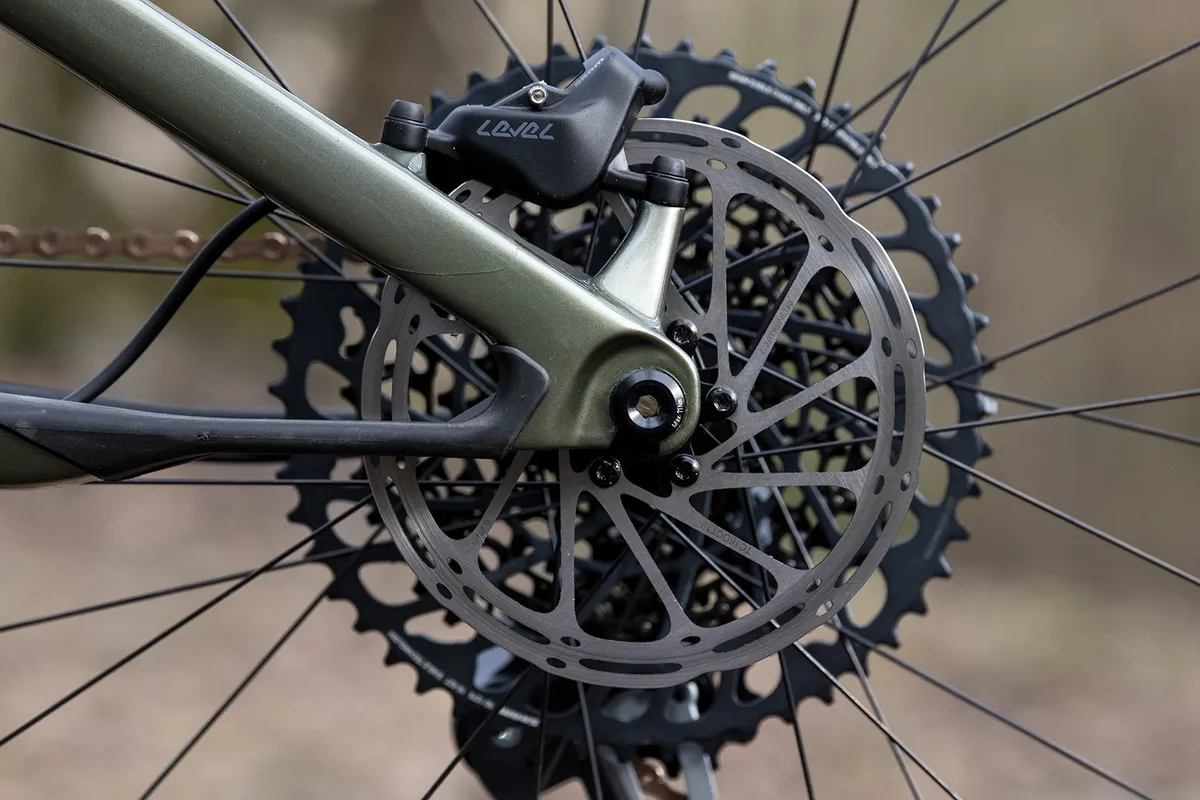
When it comes to brakes on downcountry bikes there is a mix, but they tend to use two-pot rather than four-pot mountain bike disc brakes, where there are only two pistons rather than four.
This is because downcountry bikes don't need the braking power of four pistons because they aren’t descending at the fast, white-knuckle speeds of downhill mountain bikes.
Two pistons rather than four also saves weight, helping downcountry bikes achieve their svelte builds.
In keeping with this, downcountry bikes also tend to have a mix of rotor sizes; 180mm on the front for better braking and heat dispersion and 160mm on the rear, where braking isn’t so strenuous on the disc and a few grams can be saved.
